El análisis completo ya está terminado. Así que si te interesa conocer todos los detalles del Polar M430 , te recomiendo leer la review completa pinchando aquí.
Polar acaba de anunciar su primer producto para 2017. El nuevo Polar M430 es una renovación de su exitoso (exitosísimo) Polar M400, añadiendo un sensor de pulso óptico a la ecuación. Es la tendencia del mercado y antes de final de año no habrá ningún reloj GPS que no cuente con un sensor de este tipo, así que más vale que nos vayamos acostumbrando a este hecho (y el que no esté dispuesto a hacerlo, siempre podrá seguir usando el sensor de pulso tradicional).
Pero el sensor óptico no es la única novedad, también hay nuevas funciones de software. Así que no quiero entretenerte mucho más, y vamos directamente con ellas.
Navegar a secciones específicas
Un vistazo rápido a las novedades del Polar M430
Estéticamente el M430 es muy continuista con respecto al modelo al que sustituye (el M400). De hecho la pantalla se mantiene tanto en tamaño como en resolución. La distribución de botones permanece también invariable y el desarrollo de los menús es el mismo. Aunque incorpora nuevas esferas para el reloj y la correa es algo diferente.
Pero está claro que todo nos recuerda al «viejo» M400.
Hay que ir a los «pequeños» detalles para encontrar las diferencias. Que son principalmente estas:
- Sensor de pulso óptico: Es el mismo sensor que equipa el Polar M600. En la prueba de dicho reloj ya vimos que ofrecía muy buenos resultados. El sensor sólo se usa durante la actividad, no hay registro de frecuencia cardíaca durante el resto del día (como sí ocurre con otros competidores) ni cálculo de FC mínima a lo largo del día.
- Nuevo conector USB: El conector microUSB del Polar M400 fue un auténtico quebradero de cabeza para Polar. Primero llegó con tapa, después Polar la eliminó, se modificó el conector… pero muchos usuarios seguían reportando incidencias. Polar ataja el problema con este nuevo conector propietario. Estaba claro que era algo necesario si querían evitar los problemas del pasado.
- Nueva función de seguimiento de sueño: Sí, el Polar M400 ya tenía seguimiento de sueño. El M430 ahora incorpora lo que Polar denomina Sleep Plus, intentando aportar más información acerca de la calidad del sueño. Habrá que determinar en la prueba si verdaderamente supone un paso más.
- Menos peso: A pesar de incorporar el nuevo sensor óptico, Polar ha podido reducir el peso del dispositivo en 5,6 gramos, quedando en un total de 51 gramos. Esa reducción viene por una correa más ligera, tanto por ser ahora perforada como por el material usado. El tamaño es el mismo, siendo la única diferencia 0,5mm más de grosor. Es decir, a todos los efectos es prácticamente idéntico.
- Vibración: El M400 no tenía vibración y sólo avisaba de cualquier evento a través de alertas sonoras. El M430, por fin, cuenta con aviso por vibración. Pero en el camino ha perdido los avisos sonoros. Supongo que no podemos pedirlo todo…
- Autonomía: La batería es de mayor tamaño, pero la autonomía se mantiene idéntica al M400 – 8 horas con uso de GPS y sensor óptico.
- Nuevos modos de GPS de bajo consumo: Por primera vez en Polar es posible alterar el intervalo de registro de GPS para aumentar la autonomía. El modo por defecto registra la posición GPS cada segundo y ofrece la autonomía especificada anteriormente (8 horas). Es posible configurarlo para registrar puntos de ubicación cada 30 o 60 segundos (manteniendo el registro de frecuencia cardíaca cada segundo), alcanzando un máximo de 30 horas de uso de GPS. Evidentemente esta duración prolongada de batería es a costa de un track algo peor, pero en actividades como senderismo o paseos no es algo importante.
- Cronómetro: Muchos me lo preguntáis en los comentarios ya que buscáis un reloj que tenga cronómetro independiente. Pues el M430 ya lo tiene, sin tener que entrar en una actividad.
- Distancia y ritmo con el acelerómetro interno: El M400 sólo tenía la opción de mostrar la cadencia de carrera haciendo uso del acelerómetro interno. El nuevo M430 también permite registrar ritmo y distancia cuando no se usa GPS, como entrenando en cinta o en pistas en interior.
- Seguimiento en tiempo real del objetivo diario de actividad: Durante la actividad podrás comprobar cómo está afectando la sesión de entrenamiento al objetivo que te has marcado para el día.
Esas son las principales novedades que encontrarás en el M430. Nada revolucionario, todo evoluciona sobre el M400 para poner el producto al día de lo que está demandando el mercado ahora mismo: principalmente el sensor óptico.
Y es lo que más destaca, ya que Polar ha optado por equipar la versión más «avanzada» de los dos que tiene en catálogo. El de este M430 cuenta con 6 LEDs (igual al del M600), en lugar del sensor del M200, de concepción más clásica. Y esto lleva asociado el cambio de conector que tantos problemas le supuso a Polar en los primeros meses del M400 en el mercado.
Por supuesto el resto de características del M400 permanecen invariables. Cosas como la personalización de perfiles deportivos, entrenamientos avanzados, programas de entrenamiento, bloqueo de zonas de ritmo y frecuencia cardíaca, etc. Todas esas funciones que hacían del M400 un modelo tan competitivo, siguen estando presentes en el M430.
Polar M430, disponibilidad y precio
El Polar M430 llega al mercado en mayo. Estará disponible inicialmente en tres colores: gris oscuro, blanco y naranja. Sin duda el mejor color de todos es el naranja, parece que en Polar han decidido crear una versión específica «Correr una Maratón» ;-). En cuanto a su precio inicial: 229€.
Mi opinión
No creo que esta renovación sorprenda a nadie. El Polar M400 es un producto que lleva ya varios años en el mercado y que, al ritmo que se mueve este segmento, parece una eternidad. Lo que era evidente es que junto a la llegada del sustituto del M400, llegaría también la incorporación de un sensor de pulso óptico, no sólo porque ya lo había recibido un modelo de gama inferior (el Polar M200), sino porque es lo que está demandando el mercado.
Una tónica general que estoy viendo en muchos usuarios es la crítica hacia este tipo de sensores. Pero no considero que sea un paso atrás, sino todo lo contrario. Los problemas que alegan son de lectura de pulso (llevarlo bien en el brazo es bastante más importante de lo que la gente cree), o la necesidad de llevarlo encima de la ropa en invierno. Pero todos estos relojes continúan siendo compatibles con sensores externos, por tanto nada nos impide seguir usándolos en ciertas actividades, contando con la ventaja del sensor óptico para cuando buscas más comodidad.
En cuanto al resto de funciones de software son bienvenidas y suponen una interesante actualización en el planteamiento de Polar, pero no hay nada sorprendente. Lo cierto es que esperaba algo más de Polar. Reproducción de música integrada en el teléfono, algoritmos con información más avanzada, navegación de rutas o incluso métricas de dinámica de carrera aprovechando las posibilidades que ofrece su nuevo sensor de pulso Polar H10.
Donde Polar sí destaca es en los programas de entrenamiento que puedes hacer desde su aplicación web Polar Flow. Estos planes se pueden descargar después al reloj y te irá guiando a través de los diferentes pasos de forma automática. O plantear tus propios entrenamientos. Pero es algo queda estaba presente en Flow, no algo novedoso que llegue bajo el brazo con el M430.
Por tanto no me termina de convencer su precio de lanzamiento, sobre todo porque es lo que más destacaba en el conjunto del M400. En 229€ está peligrosamente cerca de los precios de venta del Garmin Forerunner 235.
Sí, es un modelo más antiguo, pero a pesar de que Polar no tiene una mala imagen entre los consumidores, no llega a la que pueden ofrecer los americanos. Y está tan cerca que no me extrañaría nada que cuando llegue al mercado, Garmin rebaje el precio de venta de su modelo para presionar sobre el nuevo modelo de Polar.
Pero todos sabemos que una cosa es el precio recomendado, y otra muy distinta el precio real de venta (al menos en Europa, donde no se pueden fijar precios por parte del fabricante). Lo único que nos queda por ver es cómo responde el mercado al nuevo modelo y si el M430 será capaz de repetir el éxito del M400.
De todas formas, todo queda en pie de cara al análisis completo. Así que permanece atento, porque por supuesto que lo podréis encontrar aquí (dónde si no).
¡Gracias por leer!

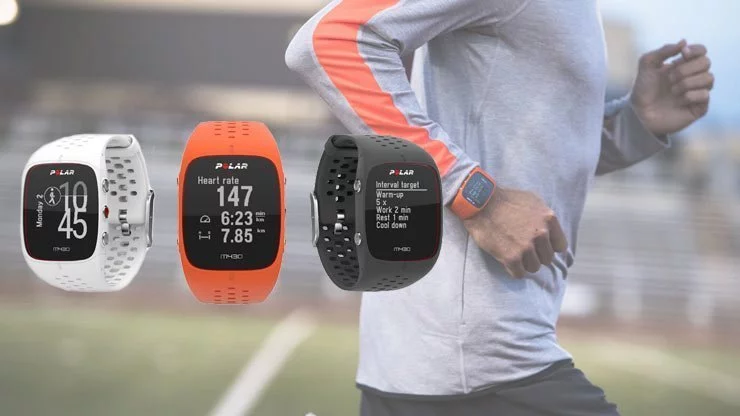
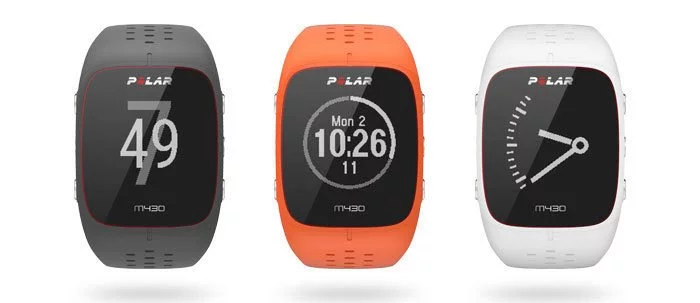

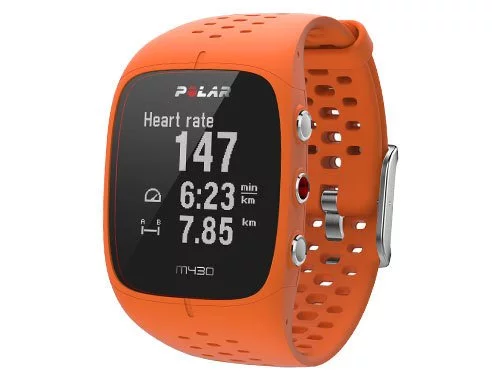
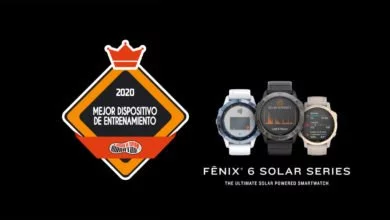
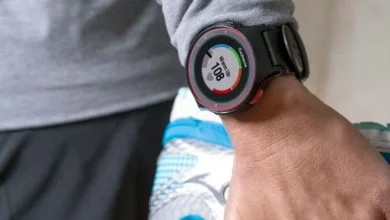

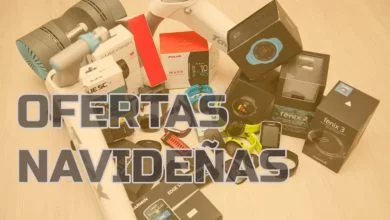
Y la renovación del V800 tienes noción de cuándo podría ser?
No, del sustituto del V800 no se sabe nada todavía
Muy interesante la entrada, sobre todo para mí, que, después de correr la media maratón de Madrid, y ver como la aplicación ismoothrun en el apple watch me daba una distancia de 22,1 km, me hace replantearme correr con un reloj específico para registrar datos de carrera. Tengo un garmin forerunner 410, ya es antediluviano, por eso estoy con dudas sobre meterme en el apple watch 2 (tengo el primero que salió) con GPS, esperar al 3, del que dicen que saldrá en septiembre, o irme hacia el forerunner 235. Me atrae la idea de no tener que llevar el teléfono, y eso lo conseguiría con el apple watch 2, pues ni para la música (siempre corro con música) ni para el GPS (ya he visto tu análisis, y me preocupa un poco la fiabilidad), pero ni el polar ni el garmin soportan música…Aunque la aplicación ismoothrun me está dando distancia de más, creo yo, es una muy buena opción porque se pueden configurar los campos (6 más la hora y la frecuencia cardiaca), y luego vuelcas a un montón de opciones (garmin, strava, etc etc). Otra cosa que me tira para atrás es que el apple watch lo uso siempre (menos para dormir y el agua), y entonces para correr tendría que ponerme dos, ese y el polar o garmin… Estoy hecho un lío…así que te seguiré leyendo, que seguro que algo de luz me das. Saludos
Un tanto decepcionado, la verdad.
Por cierto, curioso lo de M430 no?
Gracias por la información
Tiene buena pinta este reloj, además con ciertas funciones interesantes como el tiempo estimado de finalización y los entrenamientos avanzados. Igual me equivoqué al comprar tan pronto el Forerunner 35…
El rival del FR35 es más bien el Polar M200. Este M430 está enfocado a rivalizar con el FR235 y lo que sea que le sustituya en el futuro.
Y, aunque esté a años luz de este Polar, que opinión te merece el Smartband watch Madison Plus para practicar deporte, tanto en exterior como en gimnasio, incluso en sala como bike. Gracias y enhorabuena
Ese tipo de dispositivos puede servir para otras cosas, pero desde luego para controlar actividad deportiva no
Muchas gracias. Perfecto, como siempre Eduardo. Intuía que era así, pero la seguridad da escucharlo de tí.
Recomendarias a alguien que lleva el M400 y un Mio Link, pasarse al M430 ?
O no merece la pena?
La verdad es que no lo recomendaría demasiado… ten en cuenta que vas a tener lo mismo que tienes ahora, con muy pocas diferencias, y habiéndote dejado 229€ en el camino. Lo único que ganas es que en lugar de cargar dos dispositivos, sólo cargas uno.
Creo que el título de tu artículo es muy acertado.
Sobre todo la palabra «repetir».
En este caso Polar ha repetido el M400 y lo ha actualizado.
Es una pena, todos esperábamos un M400 nuevo, en la línea de Garmin 235.
Personalmente esperaba:
– Pantalla mas grande y vistosa (no me hace falta color)
– Mayor autonomía de la batería.
– Vibración. (Esto si).
– Métricas de natación.
Toca esperar a otro modelo!!!!
Pues la verdad… quitando el gran problema del precio (el m400 vale poco más de 100 euros) es lo que me esperaba… Tengo un m400 y la verdad es que siendo «solo» corredor, no le echo casi nada en falta. Lo único en lo que alguna vez he pensado era en la vibración (mejor vibración que un pitido que no se oye) y el sensor de pulso integrado…
Sinceramente, si después de su lanzamiento baja su precio (como espero) será el sustituto de mi ya más que amortizado M400 (para mí todo un éxito)
Justo estaba a punto de comprar el M400 y ahora no sé qué hacer… Alguna recomendación?
Si buscas sensor de pulso óptico, esperaría por el M430. Si eres más de sensor de pulso en el pecho, puedes ahorrarte ese dinero. Aunque debes tener en cuenta que posibles actualizaciones serán para el M430 y no para el M400.
Gracias por tu respuesta! La verdad es que usaría los dos métodos, la banda para ciclismo y el sensor para andar, nadar y senderismo. Al m430 supongo que se le podrá asociar una banda cardiaca aparte, no?
Sin problema, siempre que sea Bluetooth
Acabo de adquirir un garmin Vivoactive HR, acabo de ver el polar M430, y me planteo descambiarlo y coger este último ¿me lo recomiendas?
PD: Tus articulos y analisis son buenisimos.
La ventaja que puedes encontrar en el M430 es la posibilidad de crear entrenamientos desde la web de Polar. Si es algo que te interese, el cambio puede ser correcto.
Gracias.
La verdad que no realizo entrenamientos especificos, así que seguiré con el Vivoactive HR que la verdad va bastante bien.
Buenas, la duración de la batería usando el sensor de la frecuencia cardíaca, me lo sabríais decir?
Estoy a la espera de recibir unidad de prueba. Hasta entonces no puedo confirmarte nada